Welcome to Gyeongju! This travel guide is your key to unlocking the wonders of South Korea’s museum without walls. Whether you’re a history buff, a nature lover, or simply curious about the things to do in this former capital of the Silla Kingdom, Gyeongju has a special allure. You’ll find tombs blending seamlessly with modern life. You’ll discover temples perched on quiet hills. And you’ll uncover centuries-old relics scattered throughout the city.
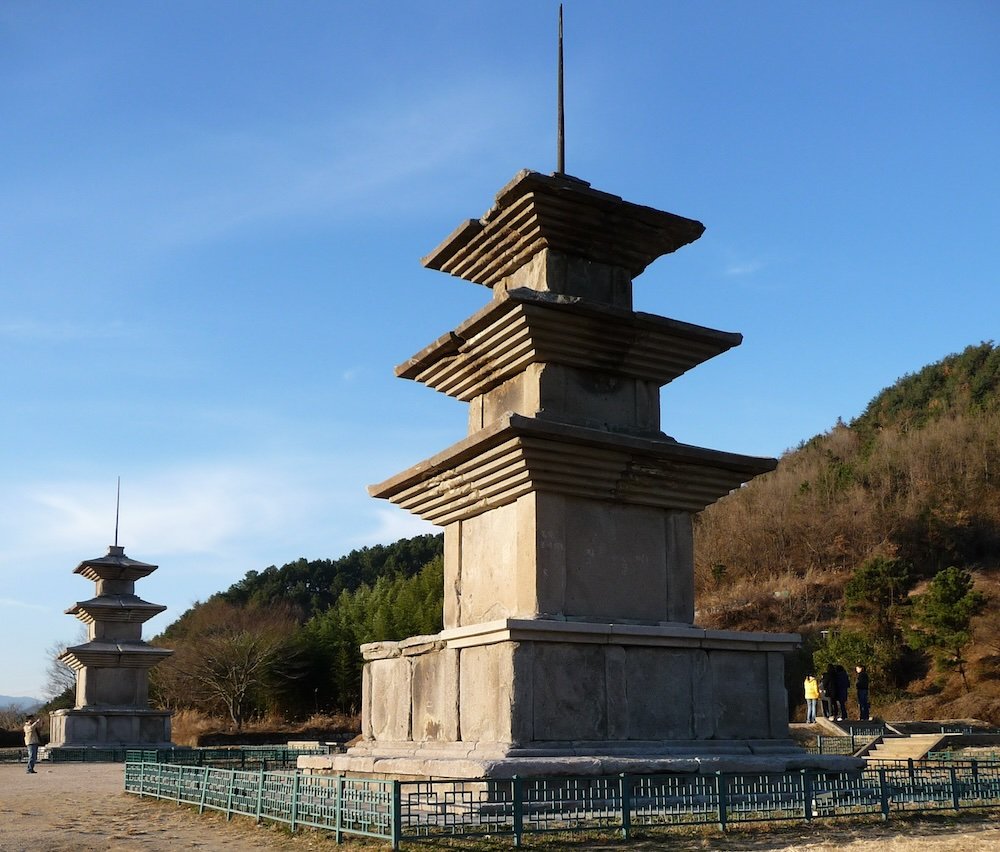
You might be scouring the web for must-see historical sites like Bulguksa Temple or curious about local delicacies such as the famed Gyeongju bread (hwangnam-ppang). Perhaps you want to know how to get around efficiently and avoid missing hidden treasures. That’s what this guide is all about. It’ll steer you toward can’t-miss sights, local eats, and practical tips.
Our Travel Video From Gyeongju, South Korea on Samuel and Audrey YouTube Channel: Nomadic Samuel + That Backpacker hosting
Why Gyeongju?
Gyeongju’s ancient beauty can be overwhelming. Especially if you have limited time. Multiple archaeological sites, winding bus routes, and lesser-known gems can make planning tough. Language barriers may also loom if you’re not fluent in Korean. It’s easy to rush from one place to another, barely scratching the surface. We get it. Our goal is to have you spending less time stressing and more time exploring.
You might be a solo backpacker, a family in search of educational adventures, or a couple craving scenic viewpoints and romantic walks. Gyeongju caters to all. With UNESCO-listed temples, charming traditional neighborhoods, and serene mountains, there’s something for every taste. We’ll shape our advice to fit different budgets and interests, making sure you find the city’s essence no matter your style.
We’ll begin with the Top 20 Things To Do in this ancient city, ensuring you hit the highlights and discover a few surprises along the way. After that, we’ll delve into local cuisine, tours, accommodations, day trips, transportation options, and wrap up with final thoughts. Let’s dive in!
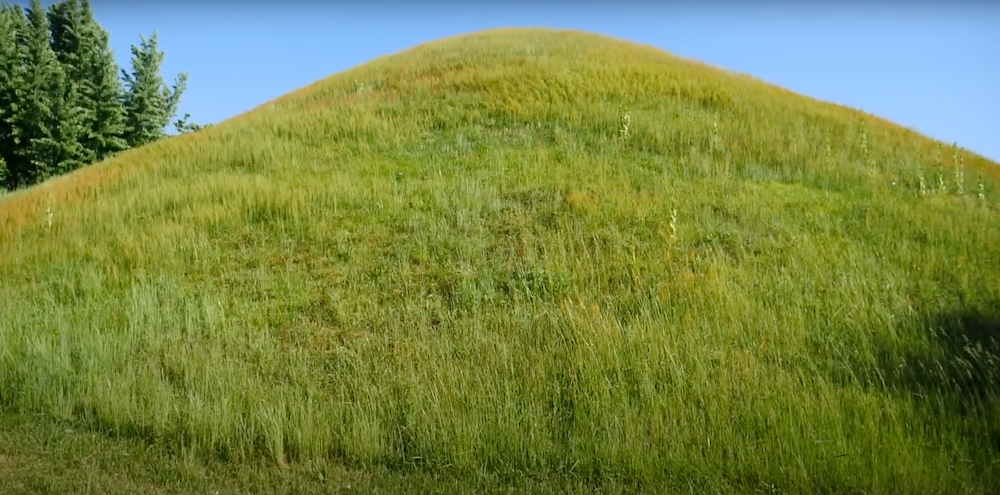
Gyeongju Top Attractions and Best Places to Visit in Korea
Of all the culturally significant locations you could explore in Gyeongju, Bulguksa Temple ranks among the top attractions to explore, as its commonly regarded as one of the most visually stunning temples in whole country. Make your way through ornately built structure with care, as its actively used by monks and worshippers today, on your way to see two pagodas that are considered national treasures, Dabotap and Seokgatap. Smoothly carved by Shilla stone masons, their simple beauty inspires all who come into sight of them, making them worth the trip out here by bus to see them.
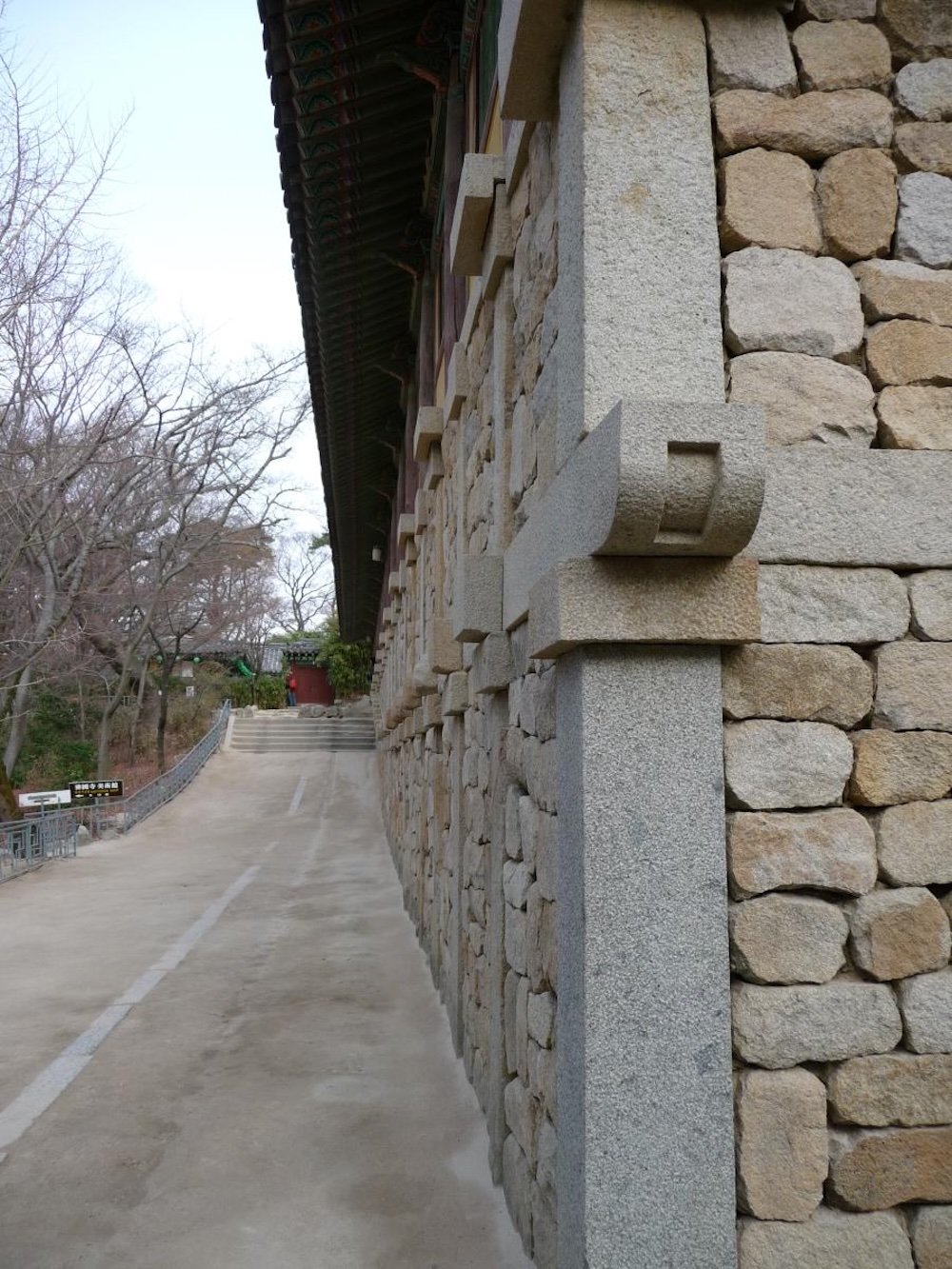
The fleet of foot can make a hike out the journey to the next attraction (those who would prefer a ride can take a bus that runs passengers to the next site), the Seokguram Grotto. Situated in a cave at the top of a moderately high hill, the Seokguram Grotto features a stone-carved statue of the Buddha in an inner sanctum of the cave, lit by sunlight via a hole in the ceiling above the statue. Visitors are advised that photography is not permitted inside of the grotto, but it can and should be used outside, where stunning views of the valley below will make for some excellent pictures, especially in the Autumn.
Next on your tour of Shilla period artifacts and archeological sites should be the Royal Tombs, where mounds in the earth contains the final resting places of the monarchs that reigned back in the kingdom’s heyday. Some sites charge a small admission fee, but for the experience of going inside the mausoleums of royalty, and strolling through intricately maintained gardens (again, come by in the Fall for some truly amazing colours, or in the Spring for cherry blossoms to add to the atmosphere), it is won well spent indeed.
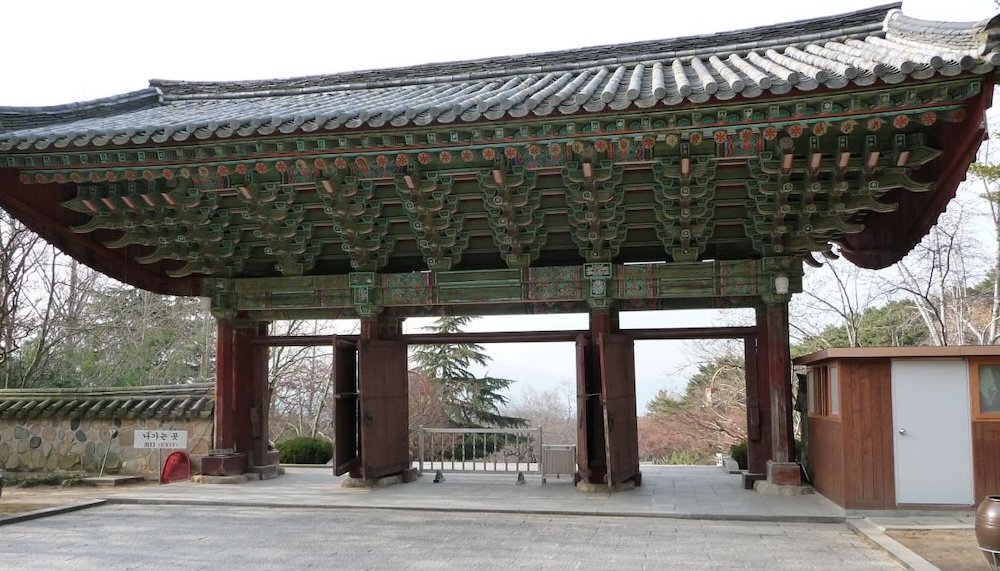
Other Cultural Attractions: Trip to Gyeongju, South Korea
If your schedule permits and you would like to indulge in the traditional food and drink of the Koreans, then try to take in the Korean Traditional Liquor and Cake Festival, held sometime between March and April. Be prepared to consume copious amounts of tea, rice cakes, and rice wine, while taking in dance and musical performances of yesteryear, in a celebration of the traditional Korean arts.
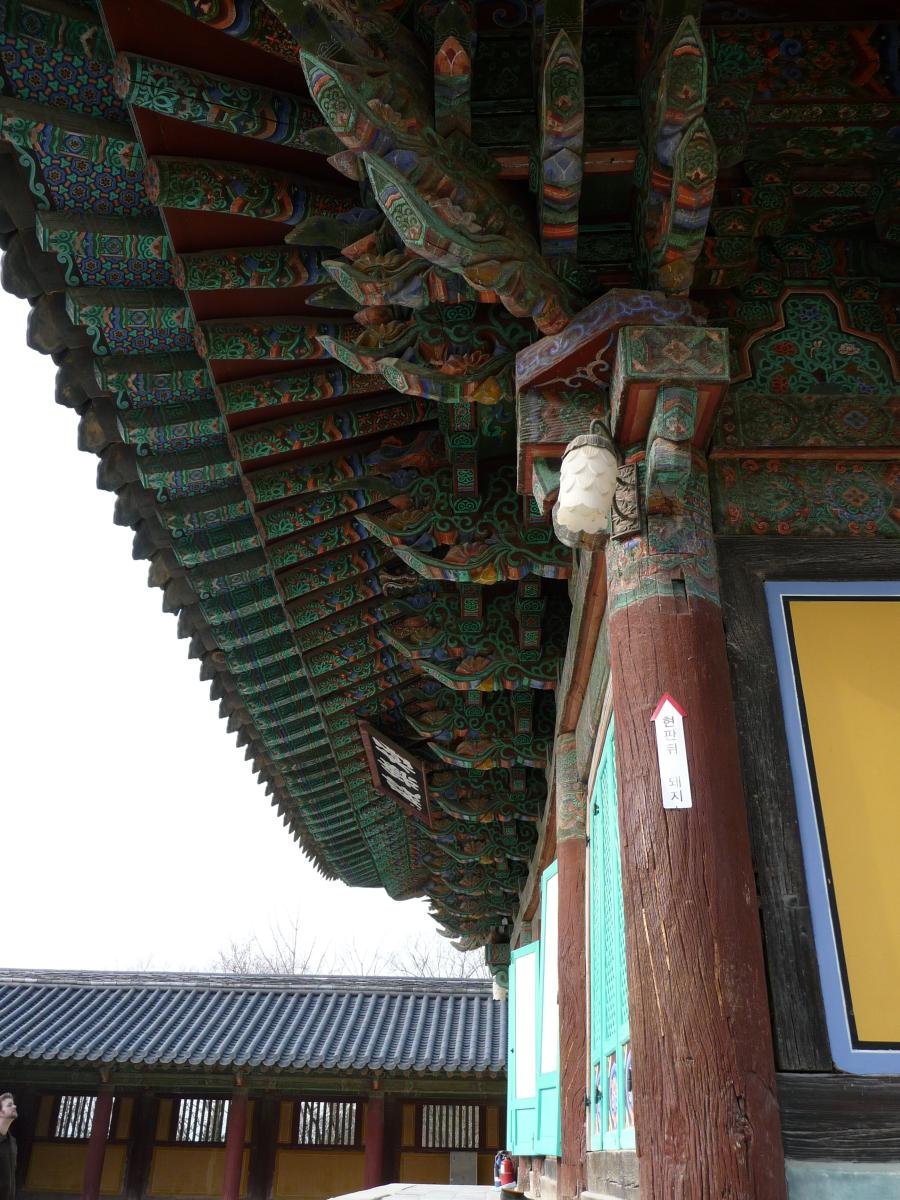
Those who were barely fazed by climbing the hill to the Seokguram Grotto should take on an additional challenge on their Gyeongju adventure by hiking up Namsan Mountain, the largest mountain in the region. Topping out at 466 metres high, and with the way up the mountain being peppered by various types of Buddhist stone tablets, you will be inspired both by the history and geology of this area, while burning off the bulgogi and soju that you consumed the previous evening!
Lastly, South Korean summers can stretch on forever, and being accompanied by smothering humidity, you will be begging for relief from the oppressive heat at some point if you decide to come here during the summer months. Fortunately, a state of the art waterpark by the name of California Beach is ready to serve both your need to cool off, and for an adrenaline rush, all in one shot. While prices can be a bit steep in peak season, you can get discount fares for an afternoon visit at these times, allowing enough time to wash away the sweatiness and crankiness that comes with temple tramping in South Korea in the middle of July.
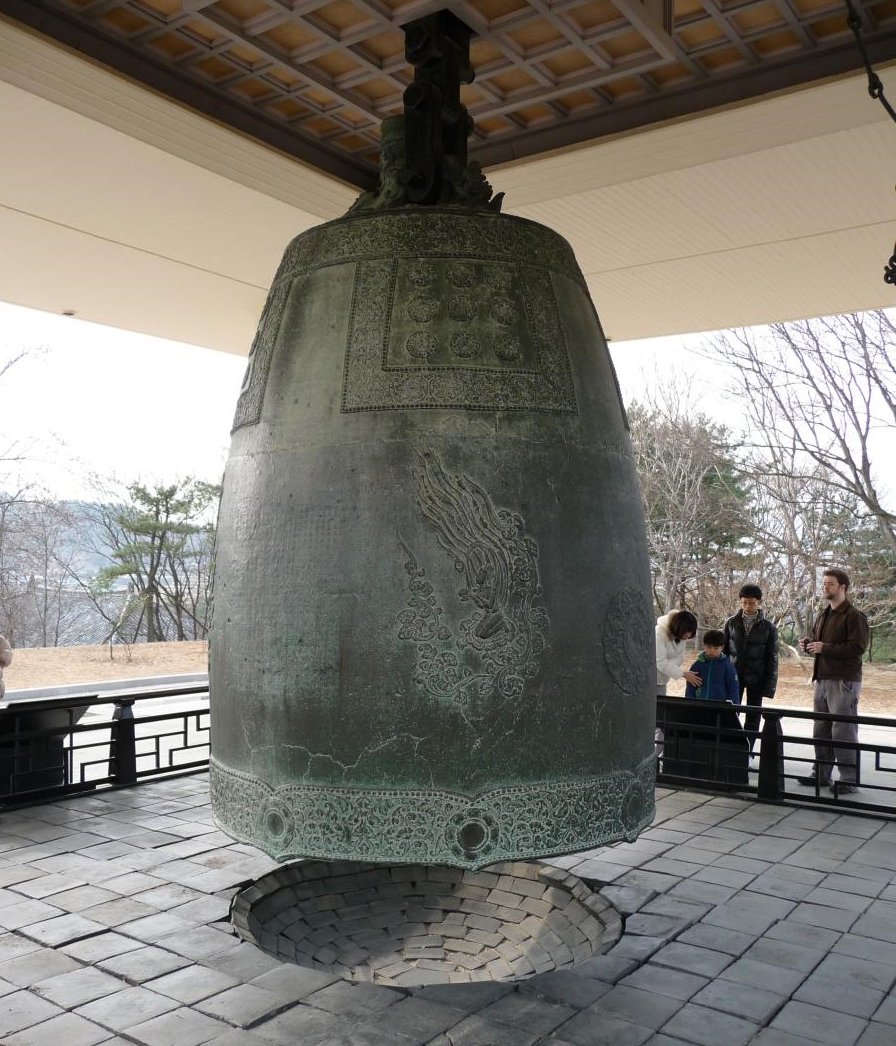
Top 20 Things To Do in Gyeongju, Korea For Visitors
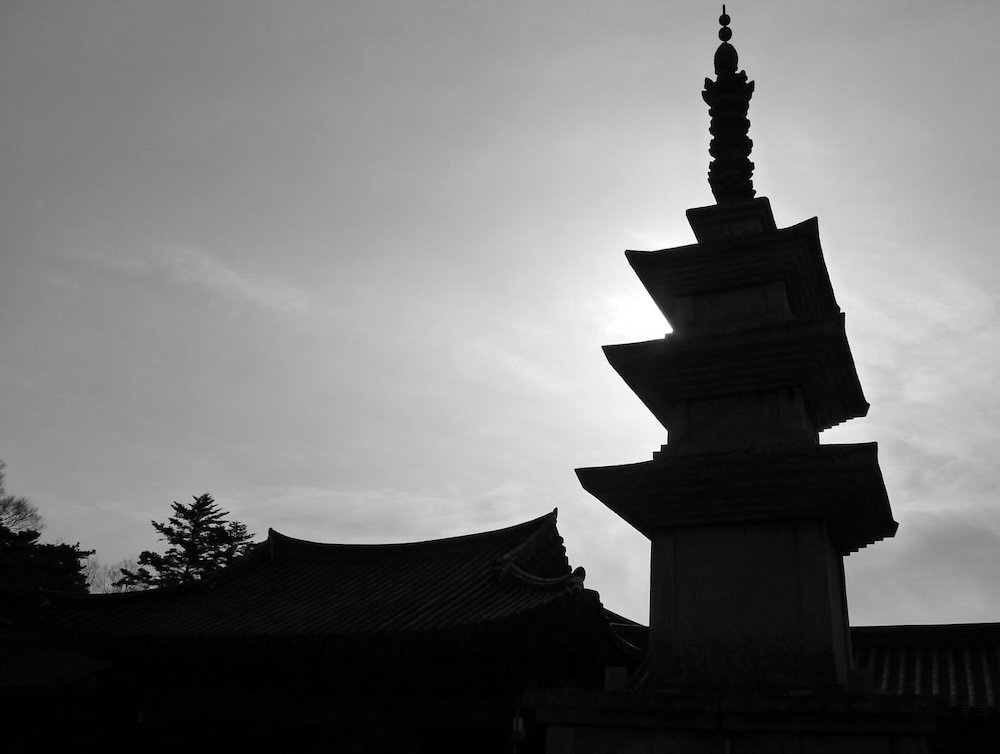
Gyeongju is a treasure trove of cultural and historical sites. Temples, tombs, and royal relics abound. Below are 20 must-see attractions and activities:
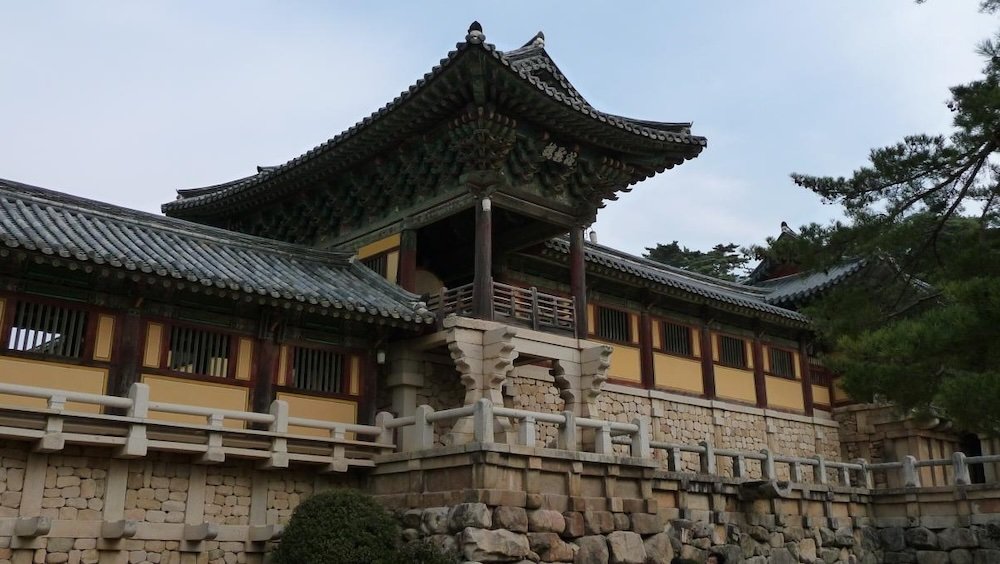
1) Bulguksa Temple
Bulguksa Temple is a UNESCO World Heritage Site famed for its stunning architecture and spiritual ambiance. Each building reflects Silla-era craftsmanship, showcasing harmonious design amid lush greenery. The intricate wood carvings and stone pagodas exude centuries of history. Monks in saffron robes sometimes roam the courtyards, heightening the temple’s serene aura. Arrive early to beat the tour buses and stroll the grounds at a leisurely pace. If you stay longer, you’ll feel the temple’s peaceful energy seep into your soul.
- A small entrance fee supports preservation efforts.
- Guided tours explain the temple’s architectural significance.
- Nearby souvenir shops sell traditional trinkets and keychains.
Tip: Wear comfortable shoes—the stone steps can be steep and slippery.
2) Seokguram Grotto
Seokguram Grotto houses a majestic Buddha statue, meticulously carved from granite. The statue sits serenely, flanked by guardian figures and bodhisattvas, all enclosed within an artificial cave. A short forest trail leads to the grotto, offering mild exercise and scenic views. Fresh mountain air greets you as you ascend, lifting your spirits with each step. Once inside, you’ll sense a mystical calm that resonates through the centuries. It’s a journey of both body and mind.
- Early morning visits promise fewer crowds.
- Photography inside the grotto is generally prohibited.
- An audio guide can deepen your understanding of its history.
Tip: Combine Bulguksa and Seokguram in one day if you have limited time.

3) Daereungwon Tomb Complex (Cheonmachong)
Daereungwon Tomb Complex features grassy burial mounds that look like small, rounded hills. Cheonmachong (Heavenly Horse Tomb) is one of the few you can actually enter, revealing how royals were laid to rest. The interior showcases artifacts, including a painted saddle flap featuring a flying horse. Paths meander between the mounds, resembling a peaceful park rather than a cemetery. The atmosphere is tranquil, blending nature and history into one. You’ll feel a sense of awe at the timeless traditions preserved here.
- Affordable admission covers all tombs in the park.
- Sakura (cherry blossoms) in spring add extra beauty.
- Nearby shops sell “Gyeongju bread” for a quick snack.
Tip: Plan around sunset—the soft light casts a magical glow on the mounds.
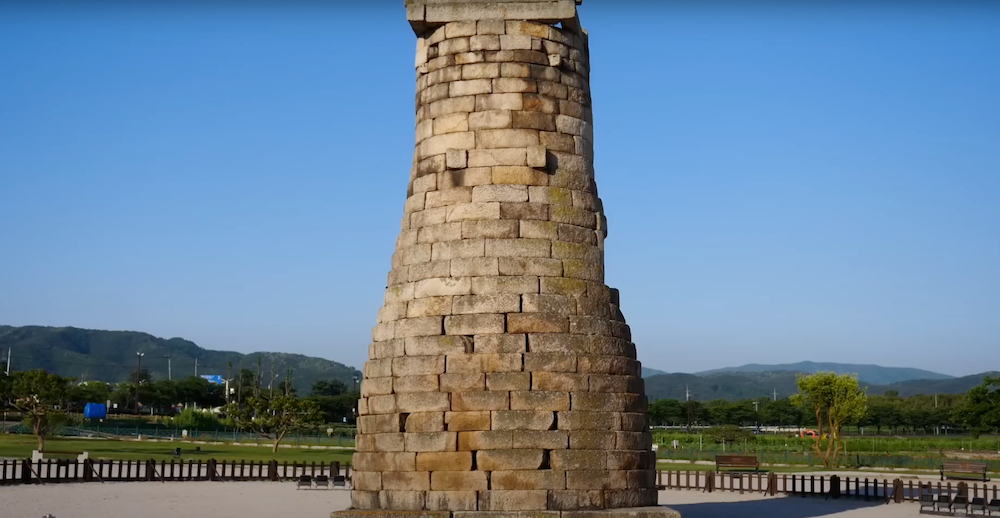
4) Cheomseongdae Observatory
Cheomseongdae is the oldest surviving astronomical observatory in East Asia. Built during the 7th century, it’s a compact stone structure that once aided sky-watching for the Silla court. Its shape and design intrigue historians, showcasing both math and astronomy in ancient engineering. Although modest in size, the tower stands as a proud testament to the city’s scientific past. Surrounding gardens offer a pleasant place to relax. The vibe is serene, ideal for a short stroll or quick photo op.
- Evening illuminations make it a popular night spot.
- Combine with a walk to the nearby Daereungwon Tomb Complex.
- Info plaques detail the observatory’s historical role.
Tip: Check the weather—clear skies enhance the site’s stargazing heritage.
5) Woljeonggyo Bridge
A modern reconstruction of a historic wooden bridge, Woljeonggyo arches gracefully over a calm river. Designed with red pillars and a multi-tiered roof, it’s a striking landmark that hearkens back to Silla aesthetics. Walking across feels like stepping into a different era, especially when the lights glow at night. Locals often fish along the banks or jog the surrounding trails. The bridge’s reflection in the water makes for fantastic photos. It’s a perfect stop for an evening stroll after exploring temple sites.
- Free entry and open around the clock.
- Adjacent walking paths lead to scenic riverside spots.
- Popular among local photographers at sunrise or sunset.
Tip: Visit after dark—the illuminated structure offers a romantic setting.
6) Gyeongju National Museum
For a deep dive into Silla-era artifacts, head to Gyeongju National Museum. Modern galleries display gold crowns, ceramics, and even weaponry uncovered from royal tombs. Interactive exhibits let you envision court life from centuries past. The museum’s layout is spacious, allowing you to wander at your own pace. English labels and audio guides make it accessible for international visitors. It’s a must if you want historical context for everything you see around the city.
- Admission is free, though some special exhibits may charge.
- A gift shop stocks academic books and replicas.
- There’s a tranquil garden to rest in between gallery visits.
Tip: Avoid weekends if you prefer a quieter experience—weekdays are less crowded.
7) Anapji Pond (Donggung Palace and Wolji Pond)
Anapji Pond was once a royal pleasure garden, now revived into a picturesque spot. Stroll around to see recreated pavilions illuminated against the water at night. The reflections create a dreamy atmosphere, perfect for a slow walk with friends or a romantic partner. History merges with nature here, giving you a sense of what life was like for ancient royals. Photographers love capturing the shimmering lights and rippling water. It’s one of Gyeongju’s most enchanting vistas.
- Entrance fees apply, but they’re minimal.
- Best viewed in the evening for the light show.
- Audio guides provide historical tidbits.
Tip: Pack a light jacket—the pond area can feel chilly after sunset.
8) Bomun Lake Resort
Bomun Lake is Gyeongju’s leisure hub, brimming with hotels, cafes, and amusement spots. A pleasant walking path encircles the lake, offering breezy views and occasional boat rides. Families come for paddle boats, while couples enjoy scenic benches for quiet chats. Cherry blossoms around the lakeside are legendary in spring. It’s not strictly historical, but it showcases modern Gyeongju at its best. You can unwind here after touring the city’s ancient relics.
- Rental bikes available for exploring the lake perimeter.
- Many upscale hotels are located here.
- Seasonal festivals bring added attractions.
Tip: Visit midweek—it’s calmer and easier to secure dining reservations.
9) Gyeongju Historic Areas Cycling Tour
Gyeongju’s relatively flat terrain and scenic backdrops make biking a joy. Multiple rental shops offer day-use bikes, so you can pedal between tombs, temples, and old neighborhoods. The city’s cultural spots are often connected by bike-friendly lanes. You’ll discover lesser-known corners like quaint cafes or hidden statues. Cycling at your own pace grants a deeper sense of freedom. Expect to fill your camera roll with spontaneous finds along the way.
- Wear a helmet for safety—some rentals provide them free.
- Early morning rides beat the midday heat in summer.
- Plan rest stops near convenience stores for snacks and drinks.
Tip: Carry a map or use an offline navigation app—some paths aren’t well-signposted.
10) Gyerim Forest
Gyerim Forest sits near the Daereungwon Tomb Complex, offering a patch of woodland steeped in legend. According to local lore, this grove is linked to King Kim Alji’s origin story, a founder of the Kim clan. Tall trees filter sunlight into soft patterns on the forest floor. It’s a brief but soothing escape from the hustle, perfect for a short nature walk. The name “Gyerim” means “rooster forest,” referencing myths about roosters crowing from a golden box found here. Magical or not, the calm is undeniable.
- Rustic benches scattered throughout for rest.
- Connects easily to other historical sites on foot.
- Early morning mist can add a mystical charm.
Tip: Beware of mosquitoes in warmer months—pack bug spray.
11) Cheomseongdae and Surrounding Lotus Fields (Seasonal)
During summer, lotus flowers bloom around Cheomseongdae, creating a pastel paradise. Strolling through the blossoming fields offers a sensory feast of vibrant pinks, greens, and subtle floral scents. Photographers gather to capture the intersection of natural beauty and ancient architecture. The big lotus leaves and delicate blooms contrast with Cheomseongdae’s rigid lines. It’s a fleeting experience—once the season ends, so do the blossoms. Make sure to check bloom times before planning your trip.
- Free access to the lotus field areas.
- Mind the mud after rainfall—footwear matters.
- Seasonal stands sell lotus tea and snacks.
Tip: Aim for early morning when the blooms are freshest and crowds minimal.
12) Experience a Hanok Stay
Gyeongju’s old hanok houses offer a glimpse into traditional Korean living. These wooden homes feature heated floors (ondol), paper doors, and courtyard gardens. Spending a night in one immerses you in the city’s cultural roots. You’ll likely sip tea on a veranda and watch the sun set over tiled roofs. Many hanoks serve simple breakfasts of rice porridge or local side dishes. It’s a cozy blend of past and present.
- Some hanoks are modernized with private bathrooms.
- Quiet hours typically start earlier than typical hotels.
- You may need to sleep on a futon-like bedding (yo) on the floor.
Tip: Reserve early—these unique lodgings fill quickly, especially on weekends.
13) Golgulsa Temple and Sunmudo Martial Arts
Golgulsa Temple sits in the mountains and is renowned for Sunmudo, a Korean Buddhist martial art. Visitors can sign up for short stays to learn basic forms and meditation techniques. The temple’s cave shrines and cliffside views heighten the sense of spiritual adventure. Daily routines include chanting, martial arts training, and communal meals. Even if you just pop in for a day, it’s worth seeing an actual Sunmudo demonstration. Expect a blend of graceful moves and serene discipline.
- Wear comfortable athletic clothes if you plan to try Sunmudo.
- Temple food is vegetarian, emphasizing simple, healthy dishes.
- You can book ahead for temple-stay programs.
Tip: Stay hydrated—the training sessions can be physically demanding.
14) Half-Day Trip to Yangdong Folk Village
A short ride from Gyeongju, Yangdong is a UNESCO-listed folk village showcasing Joseon-era architecture. Tile-roofed aristocratic homes coexist with thatched-roof cottages, all nestled in a bucolic landscape. You’ll see how people lived centuries ago, from the courtyard layouts to ancient storage jars. Local residents still inhabit the village, offering real-life glimpses of tradition. Rustic pathways lead you uphill for sweeping views of the entire valley. It’s an interactive lesson in history and culture.
- Some houses open for guided tours, so inquire upon arrival.
- Bring cash for local snacks or souvenirs.
- Public buses connect the village, though schedules can be infrequent.
Tip: Go early to avoid midday heat and appreciate the morning calm.
15) National Parks Hike: Tohamsan Mountain
Tohamsan Mountain frames the eastern outskirts of Gyeongju, home to Seokguram Grotto near its summit. Hiking trails wind through thick forests, leading to panoramic vistas of the surrounding countryside. The climb can get steep, but the payoff is worth every step. Bring water and some energy bars if you plan a longer route. You’ll pass scenic overlooks, hidden shrines, and crisp mountain air. Reaching the top offers a sense of accomplishment that pairs well with epic photo ops.
- Check weather reports—conditions can change quickly at higher altitudes.
- Spring and autumn are ideal for mild weather and colorful foliage.
- Sturdy hiking shoes reduce fatigue and risk of slips.
Tip: Combine it with a visit to Seokguram for an all-day outdoor excursion.
16) Try Traditional Tea at a Hanok Cafe
Gyeongju’s back alleys often hide hanok-style cafes that serve fragrant teas. Step inside and you’ll find low tables, soft lighting, and a serene atmosphere. Options range from green tea to sweet sikhye (rice drink) or unique brews like yuja (citron). Sipping slowly, you might hear gentle music or the rustle of a courtyard garden. It’s a relaxing pause from the city’s hustle. Such cafes blend old-world charm with modern hospitality.
- Bring a book for a peaceful reading session.
- Some places also offer traditional snacks like rice cakes.
- English menus might be limited—pointing at pictures helps.
Tip: Ask about seasonal teas—fresh ingredients often rotate throughout the year.
17) Gyodong Beopju (Rice Wine) Tasting
Gyeongju’s local rice wine, Gyodong Beopju, boasts a smooth yet rich flavor developed over generations. Breweries sometimes open their doors for tastings and insight into the fermentation process. Unlike makgeolli, this wine is clear and refined, made using traditional methods. Each sip carries a subtle sweetness balanced by a gentle tang. Sharing a round with friends or fellow travelers can spark warm conversation. It’s a cultural experience in a glass.
- Not all breweries have regular tours—call ahead or check listings.
- Consider buying a bottle as a unique souvenir.
- Pair it with mild Korean dishes for the best harmony of flavors.
Tip: Pace yourself—the alcohol content can surprise you if you’re used to standard makgeolli.
18) Stroll Along Hwangnidan-gil
Hwangnidan-gil is Gyeongju’s trendy street, lined with boutique shops, creative restaurants, and small bars. Old hanoks have been repurposed into modern hangouts, reflecting a fusion of past and present. Daytime visitors window-shop for handmade crafts or sample fusion street food. By night, ambient lights glow softly, and chatter from rooftop terraces fills the air. It’s a prime spot to feel Gyeongju’s youthful energy while still savoring heritage vibes. Your camera will love the stylish signs and retro-chic decor.
- Can get busy on weekends—weekday afternoons are calmer.
- Some shops sell local artisan goods at fair prices.
- Keep an eye out for pop-up art events or mini concerts.
Tip: Try a photo shoot—the street’s aesthetic begs for Instagram-worthy snaps.
19) Hit the Gyeongju World Amusement Park
For a total shift from ancient tombs and temples, Gyeongju World serves up roller coasters and carnival games. Thrill-seekers line up for rides like the Phaethon, while families can enjoy gentler attractions. Seasonal events, like winter festivals or summer water slides, bring year-round fun. Food stalls offer classic park fare—think corndogs, fries, and sweet snacks. It’s a playful break from historical sightseeing. Don’t knock it until you try it—sometimes you need pure entertainment.
- Lines can be long on holidays, so consider a fast-pass option.
- Lockers available to store valuables while riding coasters.
- Check the park’s website for current promotions or seasonal hours.
Tip: Arrive early for shorter queues and cooler morning temperatures in summer.
20) Nighttime Exploration of Downtown Gyeongju
While Gyeongju might seem quiet at first glance, downtown corners come alive after dark. Pubs serve Korean craft beers, and local restaurants keep the grills hot for late-night samgyeopsal. Street food carts appear, selling everything from tteokbokki to hotteok. Lantern-lit parks and softly lit tomb complexes can exude a mysterious charm. Even a simple walk along side streets can reveal neon signs and hidden bars. The city’s subdued nightlife is worth experiencing, especially if you enjoy local flavors and chill vibes.
- Taxis are easy to find for the trip back to your hotel.
- Look out for noraebang (karaoke) spots if you’re feeling musical.
- Many convenience stores stay open 24/7.
Tip: Bring cash—smaller eateries and bars might not take credit cards.
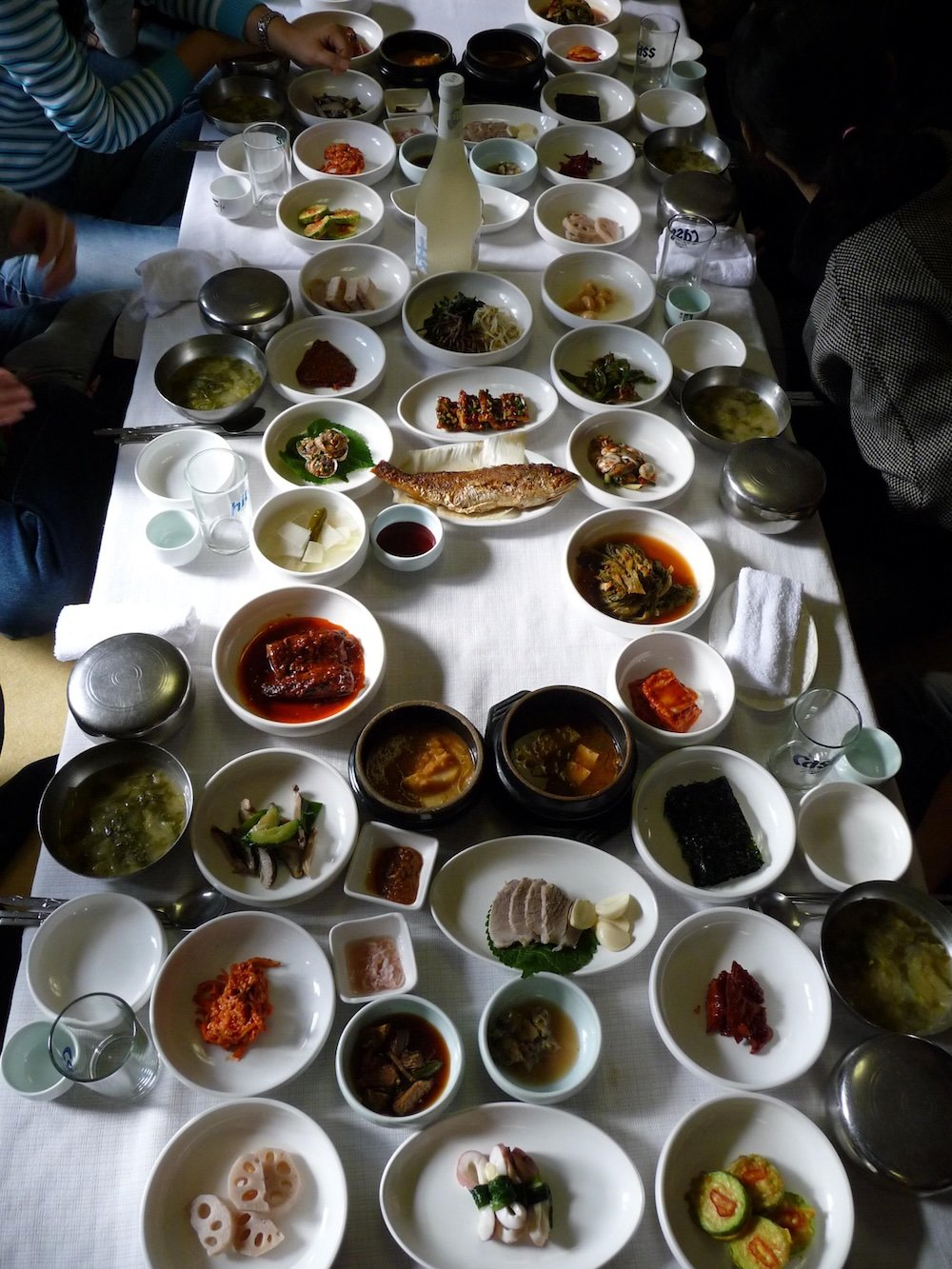
What To Eat and Drink in Gyeongju, South Korea
Exploring Gyeongju isn’t just about ticking off things to do. It’s also about tasting local flavors. The city offers a pleasing balance of age-old recipes and contemporary twists. This reflects Korea’s diverse culinary scene.
Gyeongju Bread (Hwangnam-ppang)
This local pastry is practically the city’s edible mascot. Small, round, and filled with sweet red bean paste, Gyeongju bread is a perfect on-the-go treat. You’ll see shops selling it everywhere, often in pretty gift boxes for visitors. The outer layer is lightly baked to golden perfection, making each bite both soft and slightly crisp. It’s sweet, but not cloying. Try it fresh to enjoy the warmth and subtle aroma.
- Tip: If you want a souvenir, buy a sealed box—these pastries have a decent shelf life.
Ssambap (Lettuce Wraps)
If you crave a heartier meal, look for Ssambap restaurants. They’ll bring you a spread of leafy greens, rice, and various side dishes like marinated beef or grilled fish. You then wrap everything in a lettuce leaf and top it with ssamjang (spicy bean paste). Each mouthful bursts with flavor and texture. It’s communal and fun—friends share stories while building wraps. Embrace the messy joy of it.
- Common side dishes include kimchi, seasoned veggies, and fermented sauces.
- Many places offer unlimited refills on lettuce and side dishes.
- Budget-friendly but super filling.
Traditional “Ttukguk” and “Sundaeguk”
If you visit in colder months, a bowl of hot soup like Ttukguk (rice cake soup) or Sundaeguk (blood sausage soup) can be comforting. Rice cake soup is often served for New Year celebrations, symbolizing a fresh start, but you’ll find it year-round. Sundaeguk, on the other hand, has a robust flavor, with slices of sausage in a thick broth. Both are typically garnished with chopped spring onions and spices. They warm you from the inside out.
- Sundaeguk might be an acquired taste for some.
- Ttukguk variations may include beef, dumplings, or extra veggies.
- Ask for a mild spice level if you’re not used to Korean heat.
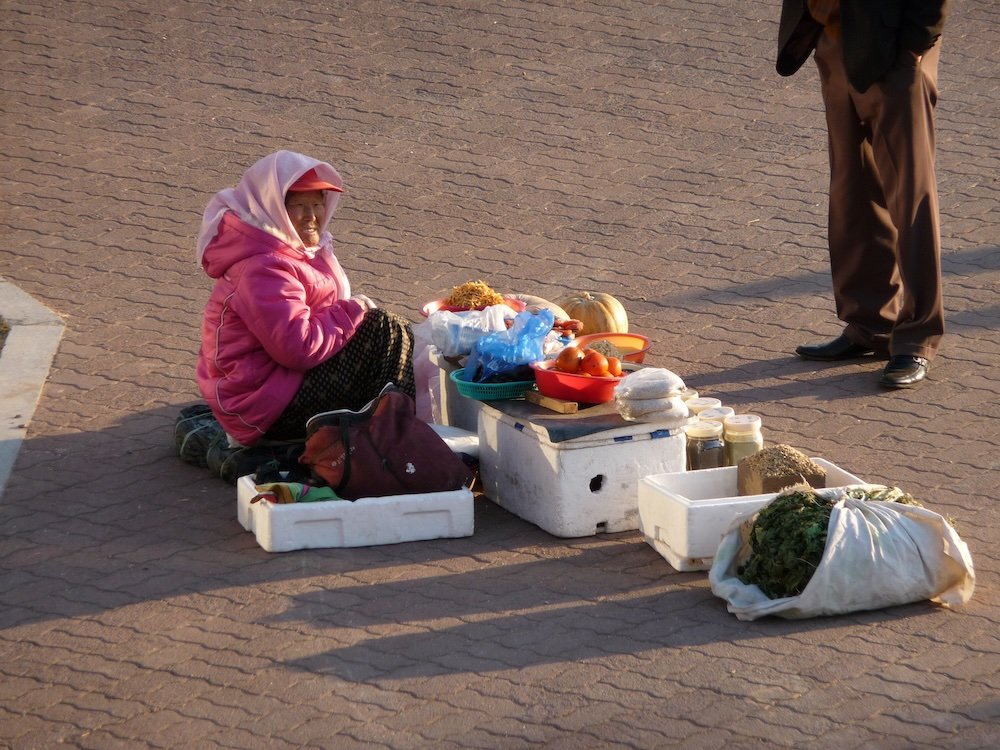
Temple Food
Given Gyeongju’s deep Buddhist ties, temple cuisine is a unique culinary experience. Vegetarian dishes abound, focusing on fresh vegetables, tofu, and natural seasonings. Expect humble flavors—no garlic or onion, as per Buddhist practice—resulting in a gentle, cleansing taste. Some temples serve a la carte; others offer fixed menus. Even if you’re a carnivore, trying temple food can open your palate to a new dimension of subtlety.
- Reservations might be required at smaller temple eateries.
- Dishes typically come in many small plates—similar to a Korean banchan spread.
- Quiet dining atmosphere, reflecting the spiritual roots.
Makgeolli and Beopju
For beverages, makgeolli (milky rice wine) is a classic choice. It’s lightly fizzy and pairs perfectly with savory pancakes (pajeon). In Gyeongju specifically, you might find Gyodong Beopju, a clear rice wine with refined taste. If you prefer less alcohol, try sikhye, a sweet rice punch served cold. Bars and restaurants around downtown or Hwangnidan-gil often have these drinks on the menu, so sampling is easy.
- Makgeolli is lower in alcohol content, but it can still surprise you if you drink quickly.
- Traditional taverns (called “jumak”) offer a rustic setting for your tasting session.
- Snacks like kimchi pancakes or fried squid make delicious accompaniments.
Cafe Culture and Desserts
Gyeongju also caters to cafe lovers, blending old hanok style with modern coffee culture. Sip on a latte while overlooking a courtyard, or indulge in sweet bingsu (shaved ice) on a hot afternoon. Some cafes even serve local herbal teas, highlighting Gyeongju’s natural bounty. Embrace the slower pace—take a seat, soak in the decor, and watch passersby. It’s a lovely way to rest after a day of exploring.
- Many cafes also sell pastries, including variations of the famous Gyeongju bread.
- Seasonal drinks—like yuja tea in winter or matcha lattes in spring—pop up often.
- Free Wi-Fi is common, making it a good break for travelers needing connectivity.
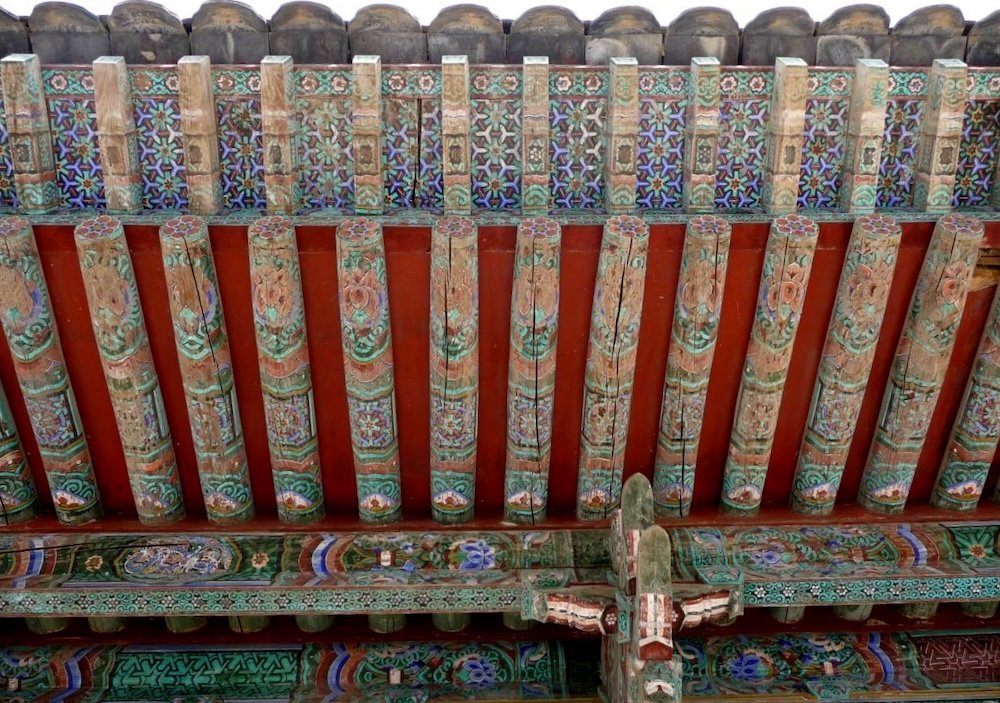
Tours For Visitors To Gyeongju, South Korea
Let’s break down some popular ways to tour Gyeongju. We’ll key in on both convenience and authenticity.
Guided Historical Walking Tours
One of the best ways to learn about things to do in Gyeongju is on foot. A historical walking tour around key sites like Daereungwon Tomb Complex, Cheomseongdae, and Woljeonggyo Bridge offers rich storytelling. Guides often share tales of Silla royalty, local myths, and architectural trivia that bring the city’s past to life. You’ll also have a chance to ask questions and explore hidden corners that aren’t always in guidebooks. These tours usually last two to three hours, keeping it manageable yet informative.
- Many tours are available in English, though checking in advance is wise.
- Wear comfy shoes; ancient stone paths can get uneven.
- A bottle of water and sun protection help, especially in summer.
Tip: Early morning tours beat the crowds and let you bask in a calmer atmosphere.
Cycling Tours
Gyeongju’s gentle terrain and well-connected bike paths make cycling tours a treat. You can rent a bike yourself or book a group tour with a knowledgeable leader. Pausing at tombs, temples, and picturesque fields, you’ll enjoy a mix of exercise and exploration. Guides may reveal local secrets, like a hidden cafe or a roadside mural. Plus, biking offers flexibility—if something catches your eye, you can pull over. It’s an immersive way to cover more ground.
- Bike tours often include a helmet, but confirm before booking.
- Pace is generally leisurely, suitable for moderate fitness levels.
- Some tours are child-friendly with tandem or kids’ bikes available.
Tip: Carry small change—you might stumble upon street stalls selling snacks or cold drinks.
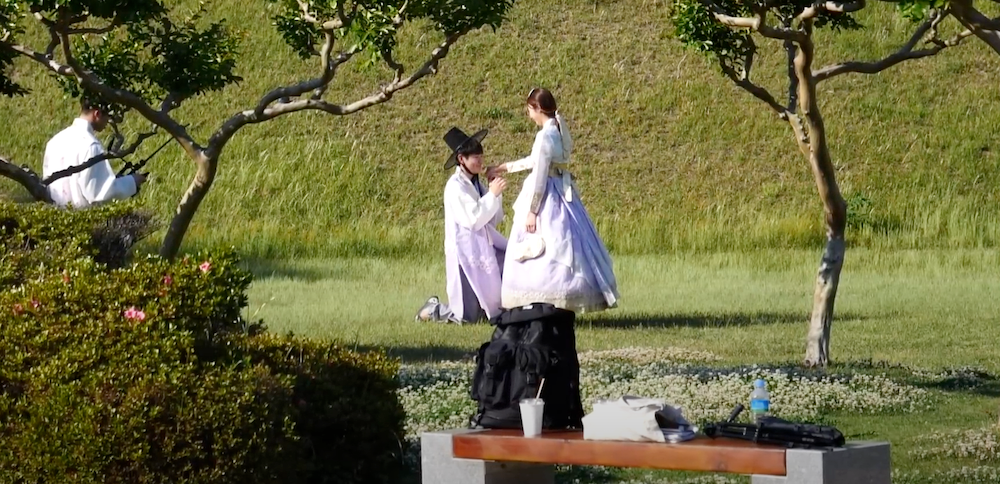
Temple-Stay Programs
For a deeper cultural experience, consider a temple-stay. While not a conventional tour, these programs often include guided sessions on Buddhist practices, tea ceremonies, and temple cuisine. Monks or trained hosts explain the significance of chanting or meditative walks. You’ll sleep in simple rooms, usually with heated floors, and wake early for dawn rituals. It’s a unique blend of structured learning and personal reflection. If you crave spiritual insight, this is a journey into the heart of Gyeongju’s heritage.
- Dress modestly—long pants and sleeves are recommended.
- Schedules can be strict, including early wake-up calls.
- Interactions with resident monks provide rare cultural insights.
Tip: Check official temple-stay websites for advanced reservations, especially in peak seasons.
Private Car Tours
For those short on time or traveling in a group, a private car tour can be ideal. A driver-guide whisks you between major sites—like Bulguksa, Seokguram, and Anapji Pond—while explaining their significance. You’ll skip the hassle of public transport and can customize stops based on your interests. It’s more expensive than group tours, but efficiency and personalized service often justify the cost. Perfect if you prefer comfort and flexibility.
- Confirm the guide’s language skills; English-speaking drivers are in demand.
- Negotiate the itinerary beforehand to avoid rush fees.
- Private tours can last half a day or a full day, depending on your plan.
Tip: Ask about lunch stops—your guide might suggest a local gem rather than a touristy restaurant.
Food and Culture Tours
If your main draw is things to do involving local gastronomy, sign up for a food and culture tour. These often combine visits to bustling markets, tastings of Gyeongju bread, or sampling sikhye from a traditional vendor. Some tours also include brief workshops—like making your own kimchi or crafting a local dessert. It’s a fun, hands-on approach to learning about the city’s culinary soul. Even picky eaters often discover new favorites.
- Come hungry; multiple tastings can fill you up quickly.
- Tours may require extra fees for cooking demonstrations.
- Group sizes vary—smaller groups offer a more intimate experience.
Tip: Mention dietary restrictions in advance so the guide can adjust the tastings.
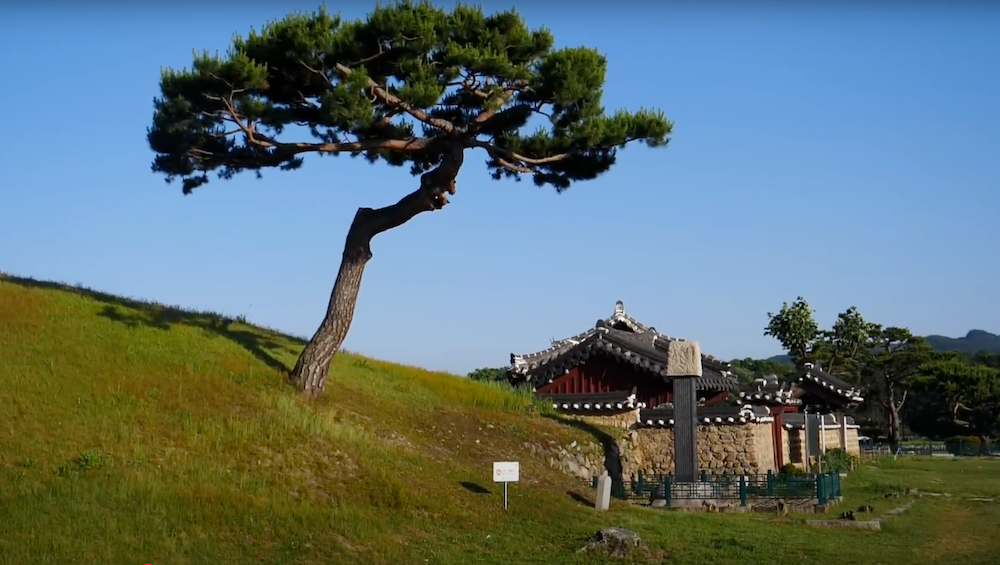
Gyeongju Accommodations Guide: Hotels, Guesthouses and Hostels
Finding the right place to rest is key when planning things to do in Gyeongju. The city offers a blend of modern hotels, cozy guesthouses, and budget-friendly hostels. Each option suits different travel styles—whether you’re craving a luxury retreat or a more authentic local stay
Luxury Hotels
If you’re looking to splurge, Gyeongju has a handful of luxury hotels near Bomun Lake or the city center. These properties often boast spacious rooms, on-site spas, and high-end dining options. Some even feature indoor and outdoor pools, plus scenic lake views. While prices can soar during peak seasons, the convenience and upscale amenities may be worth it for those seeking relaxation. You’ll usually find multilingual staff who can assist with tour bookings and local tips. It’s a hassle-free base for exploring major attractions.
- Early booking can secure better rates.
- On-site restaurants can be pricey—consider venturing out for meals.
- Amenities like fitness centers and business lounges might prove handy.
Tip: Look for package deals that include breakfast or spa access—savings can be substantial.
Mid-Range Hotels and Boutique Stays
For a balance of cost and comfort, mid-range hotels or boutique properties are the sweet spot. Many line the roads near central Gyeongju or along the Bomun Lake Resort area. Rooms might not be lavish, but they typically include essentials like air conditioning, Wi-Fi, and decent breakfast spreads. Boutique hotels often showcase unique themes or decor, adding a personal touch to your stay. They’re great for travelers who want a bit of style without breaking the bank.
- Rates can spike on weekends or holidays.
- Some mid-range places offer free bike rentals—a bonus for exploring nearby sites.
- English-speaking reception varies, so keep a translation app handy.
Tip: Read recent guest reviews—they’ll clue you in on cleanliness, noise levels, and staff service.
Traditional Hanok Guesthouses
For a more immersive experience, consider staying in a hanok guesthouse. These are traditional Korean homes with wooden beams, heated floors, and paper doors. You’ll often sleep on a futon (yo) laid directly on the heated floor. Mornings might bring a simple Korean breakfast, and evenings might involve chatting with the owners about local culture. It’s cozy and cultural, though creature comforts can be basic. Perfect if you want to feel Gyeongju’s heritage firsthand.
- Book early—authentic hanok options fill up fast.
- Quiet hours are common; expect a serene atmosphere.
- Some hanoks have shared bathrooms—check before reserving.
Tip: Pack light—these homes aren’t designed for large suitcases, and storage can be limited.
Budget Hostels
Backpackers and budget travelers often opt for Gyeongju’s hostels. These spots provide dorm-style or compact private rooms at wallet-friendly rates. Common areas encourage socializing with fellow tourists. Plus, you’ll likely find communal kitchens and lounge spaces. Be mindful of any curfews or housekeeping schedules. While basic, hostels offer a friendly vibe that lets you meet new people and share travel tips.
- Check if bed linens and towels are included—some hostels charge extra.
- Earplugs can help if you’re sensitive to noise, especially in dorm rooms.
- Lockers are usually available for valuables.
Tip: Look for hostels near bus stops or central attractions to save on transportation costs.
Location Considerations
- Bomun Lake: Ideal for resort-style stays, great for couples or families seeking relaxation.
- City Center: Convenient for public transport, dining options, and major historical sites.
- Near Train or Bus Stations: Handy for early departures or quick check-ins.
Day Trips From Gyeongju, Korea
Once you’ve explored Gyeongju’s ancient tombs and serene temples, you might be ready for new horizons. Lucky for you, the region offers wonderful day trips that complement your city adventures. From seaside strolls to mountainous escapes, here are some enticing things to do beyond Gyeongju’s borders.
1) Pohang’s Homigot Sunrise Square
If witnessing the first rays of dawn is your dream, head east to Homigot in Pohang. Known for its giant hand sculptures reaching out of the sea, this coastal spot is famous for breathtaking sunrises. Stroll along the boardwalk, snap photos with the iconic hand statue, and indulge in fresh seafood at nearby restaurants. The sea breeze and crashing waves refresh your senses. It’s a 40 to 50-minute drive from Gyeongju, making it a feasible early-morning adventure. Sunrise times change seasonally, so plan accordingly.
- Tip: Check bus schedules if you’re not renting a car—early morning services can be limited.
2) Ulsan’s Daewangam Park
An hour or so away lies Daewangam Park in Ulsan, a coastal gem with pine forests and scenic cliff views. A rock-lined pathway leads to Daewangam Island, offering panoramic vistas of the East Sea. Legend says a dragon king once lived here, adding a dash of myth to the rugged landscape. Trails vary in difficulty, but most are family-friendly. Bring a picnic, sit on a bench, and soak up the sea air. Don’t forget your camera—rock formations create dramatic backgrounds for snapshots.
- Public buses connect Gyeongju to Ulsan, but transfers may be required.
- The park has a small cafe and restrooms.
- Visiting in spring or autumn yields mild weather.
3) Andong Hahoe Folk Village
A two-hour drive north gets you to Andong Hahoe Folk Village, another UNESCO World Heritage site. Traditional hanok homes, winding alleys, and the Nakdong River’s gentle flow set a timeless mood. Cultural performances, like the Hahoe Mask Dance, occur on weekends. Hire a bike or walk the riverside path for extra scenery. This outing offers a deeper look at Joseon-era lifestyles, complementing your Gyeongju explorations. It’s a day well spent for history buffs.
- Guided tours are available but not mandatory.
- Local eateries serve Andong’s famous jjimdak (braised chicken dish).
- Expect moderate entrance fees.
Tip: Start early if you want to catch the mask dance show, as it can draw crowds.
4) Busan Beaches and Markets
If you crave urban energy and beach vibes, Busan is roughly 90 minutes away by car or express bus. Relax at Haeundae Beach, browse street food in BIFF Square, or stroll the colorful Gamcheon Culture Village. Busan’s seafood markets—like Jagalchi—offer an immersive culinary experience. A day trip might feel rushed, but it’s doable if you focus on a couple of key spots. Enjoy the city’s dynamic blend of modern high-rises and tranquil coastal stretches.
- KTX or express buses provide fast access between Gyeongju and Busan.
- Traffic can be heavy in peak hours—factor in extra travel time.
- Keep an eye on the weather—beaches can be packed on sunny weekends.
5) Yeongdeok Snow Crab Feast (Seasonal)
Seafood lovers might detour to Yeongdeok, famed for its succulent snow crabs. Winter months are prime for feasting, as fishermen haul in fresh catches daily. Restaurants line the port, each boasting their own cooking style. Steamed crab, crab stew, and crab-related side dishes fill your table quickly. It’s a unique gastronomic adventure that defines Korean coastal dining. Just be prepared to use your hands—part of the fun is cracking open the shells.
- Prices can vary—negotiate politely or compare a few spots.
- Wear clothes you don’t mind splashing with crab juices.
- Ask for local soju or beer pairing recommendations.
Tip: Call ahead to check availability, especially if you’re visiting off-peak times.

Gyeongju Transportation Guide
Navigating Gyeongju can be smooth if you know your options. From modern trains to old-school buses, the city and its surroundings offer multiple ways to explore the top things to do. This transportation guide outlines your best bets.
Arriving in Gyeongju
- Train: High-speed KTX doesn’t stop in central Gyeongju but at Singyeongju Station (about 15 km away). A local bus or taxi then takes you into the city.
- Bus: The Intercity Bus Terminal is more centrally located, with frequent connections from Seoul, Busan, and other major cities.
- Car: Renting a car is an option, though city traffic can slow you down during peak hours.
Tip: Compare arrival points—sometimes an intercity bus to downtown is more convenient than a train to Singyeongju.
Getting Around by Bus
Gyeongju’s bus system covers most major attractions. Fares are typically around 1,200–1,500 won (less than $2). Buses can be crowded on weekends, but they’re budget-friendly. Major lines stop near landmarks like Bulguksa Temple, Bomun Lake, and downtown. Timetables vary, so checking an online schedule or kiosk map helps. Remember to press the stop button if you want to get off at a specific stop.
- T-Money or Cash: You can use a T-Money card or pay cash (exact change needed).
- Patience: Some lines have 20–30 minute intervals.
- Mind the language: Stops are announced in Korean, though bigger routes may offer English signage.
Tip: Download a local bus app or check bus routes offline in case Wi-Fi is spotty.
Taxis and Ridesharing
Taxis are plentiful in central Gyeongju. They’re metered and relatively affordable for short distances. Flagging one down on the street is easy, or you can find them near tourist hotspots. Many drivers speak limited English, so have your destination written in Korean if possible. Ridesharing apps like KakaoTaxi can be handy, but coverage might vary outside urban centers.
- Standard vs. Deluxe: Standard taxis are cheaper, deluxe (“mobeom”) cost more but offer extra comfort.
- Peak Times: Finding a taxi might be tough during major festivals or rush hours.
- Night Surcharge: Some late-night rides include a small fee increase.
Tip: Carry a hotel or attraction address in Korean—this speeds up communication with drivers.
Rental Bikes
For short, scenic rides between tombs and temples, rental bikes are a fun option. Many shops in downtown or near Bomun Lake rent hourly or daily. Some accommodations provide bikes for guests. The city’s relatively flat terrain suits casual cyclists, but watch out for occasional hills. Biking also lets you discover hidden alleys and small cafes at your own pace.
- Lock your bike when stopping for lunch or sightseeing.
- Wear a helmet—some rental shops supply them at no extra cost.
- Check the weather forecast; rainy days can make biking uncomfortable.
Tip: Plan your route ahead—certain roads have limited bike lanes, so choose safer paths.
Car Rentals
If you want total freedom, car rentals give you the flexibility to visit remote temples or day-trip destinations like Andong or Yangdong Folk Village. Major rental agencies operate near bus terminals or train stations. Just remember that navigating Korean roads can be tricky if you can’t read Hangul. GPS in English is available in many vehicles, but do confirm before booking.
- Driver’s License: An International Driving Permit is usually required for foreigners.
- Parking: Historic sites have designated parking, sometimes free, sometimes not.
- Fuel Costs: Gas prices can add up, especially for longer trips.
Tip: Travel outside peak hours—traffic jams happen, especially on weekends near Bomun Lake.
On Foot
Don’t underestimate walking in Gyeongju. Many tomb complexes, museums, and parks cluster near each other, allowing for leisurely strolls. The city’s compact layout in central areas makes foot exploration appealing. You’ll likely stumble on hidden corners—a small temple or a quiet side street. Just wear comfy shoes and watch for uneven pavement.
- Maps & Signs: English signage is growing, especially near tourist zones.
- Sun & Heat: Summers can be hot; bring water and a sun hat.
- Night Lighting: Certain paths illuminate key monuments after dark—perfect for an evening walk.
Tip: Combine walking with public transport to cover longer distances efficiently.
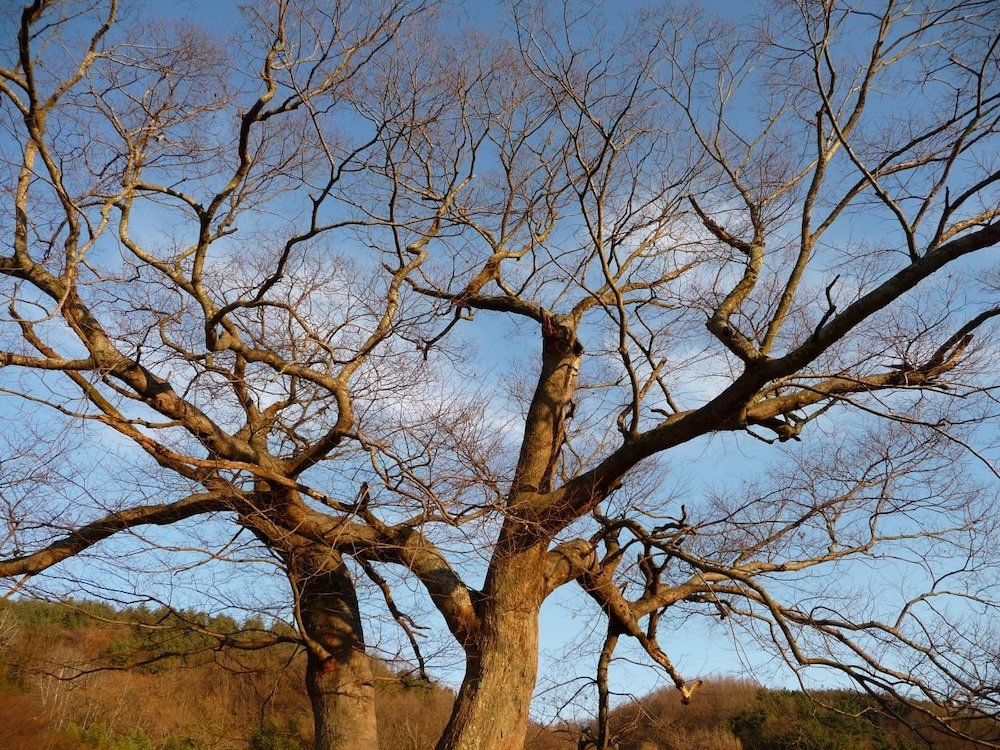
Gyeongju Travel Guide: Final Thoughts
Gyeongju may be known as Korea’s “museum without walls,” but it’s so much more than static relics and ancient tombs. As you wander through Daereungwon’s grassy mounds or stand awe-struck before Seokguram’s stone Buddha, let yourself be transported to a different era. There’s a quiet magic in these places that demands your attention. Slow down. Watch how morning sunbeams hit the temple courtyard, or how twilight envelops the tomb complex in a gentle hush. These details spark a connection with the countless souls who once called Gyeongju home.
Savor Local Flavors
A trip here wouldn’t be complete without indulging in local favorites. Gyeongju bread, ssambap, and perhaps a sip of Gyodong Beopju wine reflect the city’s roots in each bite. Taking time for a relaxed meal—maybe at a modest eatery or a hanok-style cafe—can also lead to impromptu chats with friendly locals. Sharing a meal fosters understanding, bridging cultural gaps in the simplest, most enjoyable way.
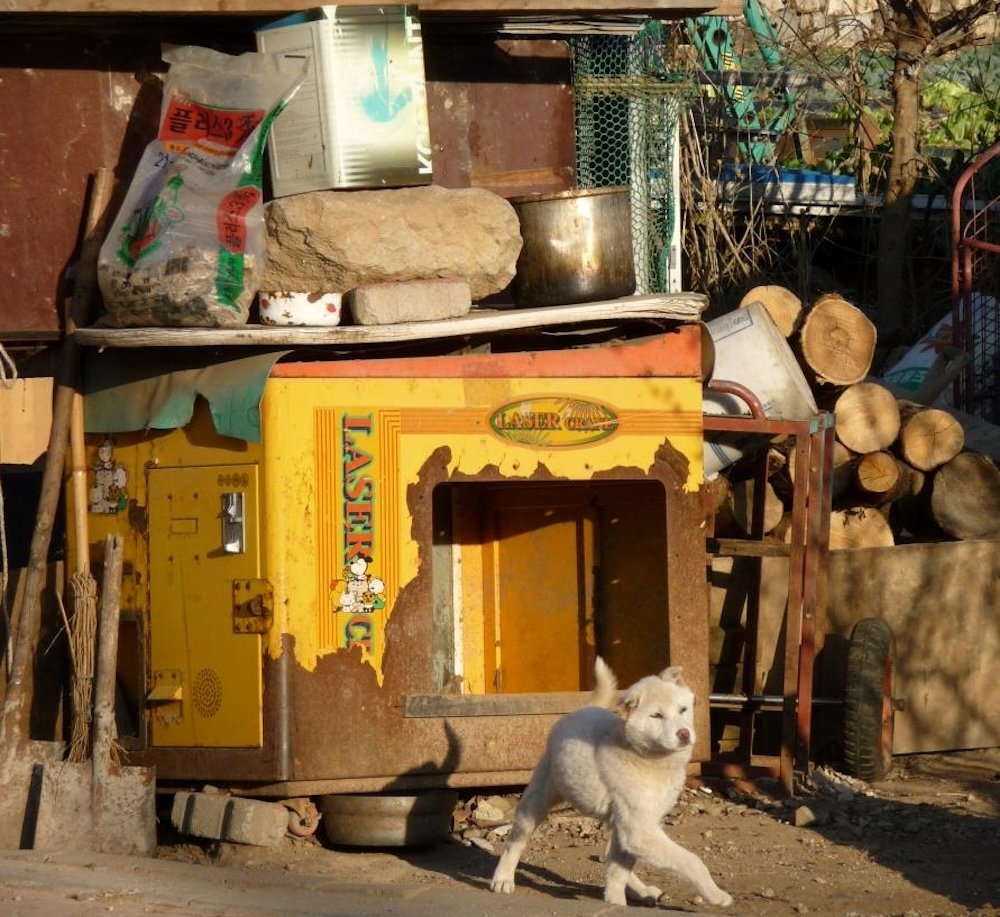
Explore Beyond the City
Don’t limit yourself strictly to Gyeongju’s city limits. Day trips to the coast or nearby folk villages offer perspectives on how this region has thrived for centuries. Whether you chase a sunrise at Homigot or marvel at Andong’s old-world charm, you’ll see how interconnected Korea’s cultural tapestry really is. Each short journey adds layers to your overall experience, ensuring your memory of Gyeongju extends far beyond a single place.
Practical Tips to Keep in Mind
- Plan for Seasons: Cherry blossom season and autumn foliage can turn Gyeongju into a visual feast, but also bring in more crowds and higher accommodation costs.
- Transport Savvy: With buses, trains, taxis, and bikes available, mix and match to suit your day’s goals.
- Mind Local Etiquette: Be respectful at temples, remove shoes when required, and maintain quiet in prayer areas.
- Language Hurdles: Some signage is in English, but a few Korean phrases can open doors. Locals appreciate the effort.
Making It Your Own
Gyeongju is a city of contrasts and continuity. It’s a place where you can sip tea in a centuries-old hanok one moment and cycle along a modern bike path the next. Embrace the old-world charm. Also, relish the present-day comforts. And carry a piece of this city’s enduring spirit with you when you leave. Safe travels! May Gyeongju’s timeless heritage inspire you long after you’ve returned home..
